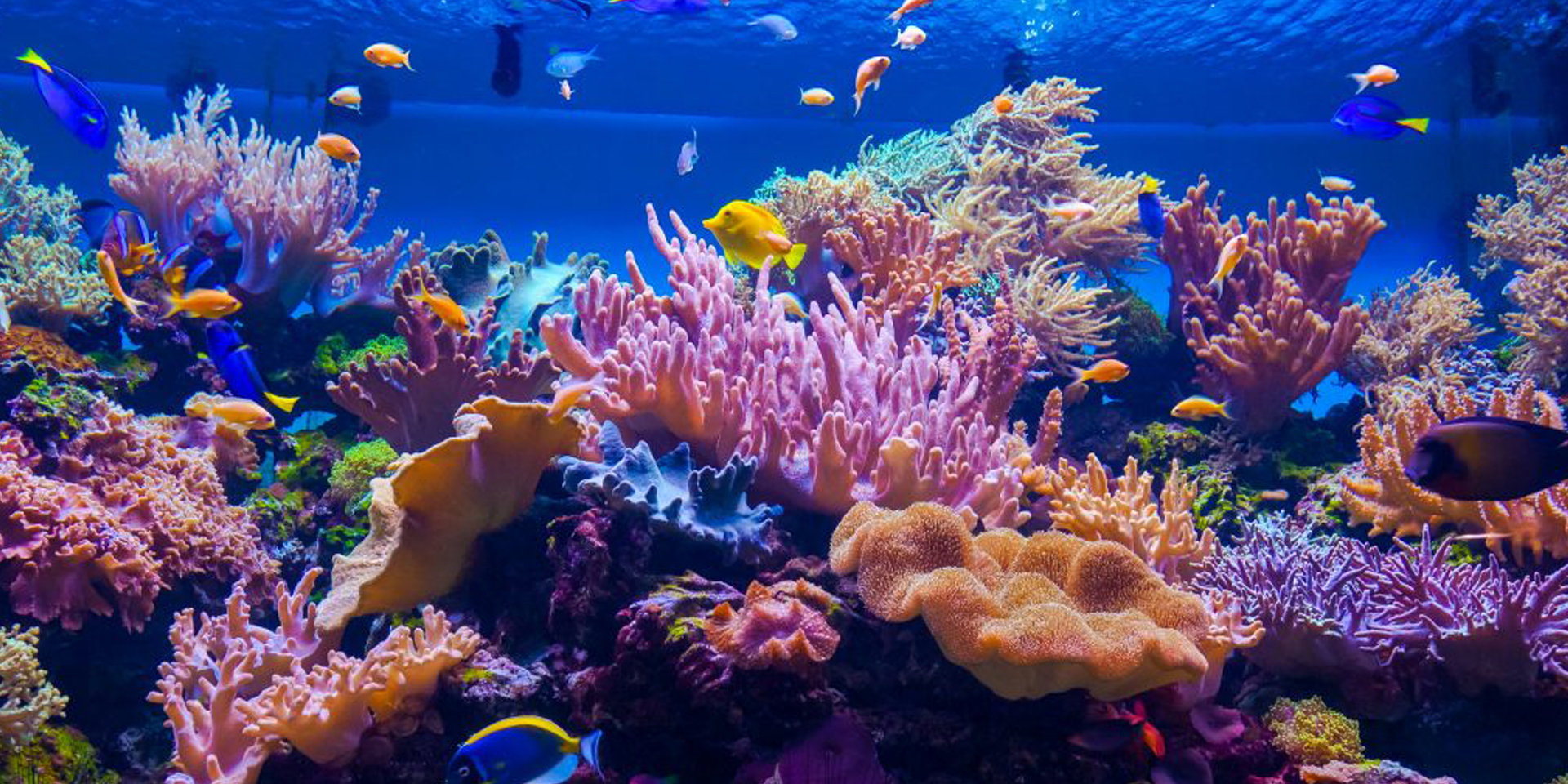
CRF.E | How To Grow a Reef
Coral Copies
When it comes to reproduction, corals have a few strategies. They can be male or female, and can reproduce sexually, resulting from eggs and sperm from different colonies that produce free-swimming larvae, or asexually, which results in polyps that are clones of the parent.
Why do they have multiple methods, you might ask? Asexual reproduction allows for rapid increase of the colony–think of it as the fast food of reproduction–quick but with a limited menu. Sexual reproduction, on the other hand, is more complicated but increases genetic diversity, just like with any other animal, and it can help start new colonies far away from the parent corals, thereby spreading them far and wide. Great restaurant, great food–definitely more expensive.
Many corals are “broadcast” spawners, which means that fertilization occurs outside the body. Colonies release huge numbers of eggs and sperm that are sort of glued into bundles and float toward the surface, usually about once a year and in some places is synchronized for all the individuals in a given area. Some corals brood their eggs in the body of the polyp and release sperm into the water and as the sperm sink, polyps containing the eggs take them in and fertilization occurs inside the body. These “brooders” often reproduce several times a year on a lunar cycle. Is this asexual or sexual reproduction?
From Coral to Reefs
So, how does coral become a reef?

Because individual coral polyps are very small, usually less than half an inch (1.5 centimetres) in diameter, and they grow very slowly, it takes a long time to grow a big coral colony or a coral reef to develop. The fastest corals expand at more than 6 inches (15 cm) per year, but most grow less than an inch per year. Reefs themselves grow even more slowly because after the corals die, they break into smaller pieces and become compacted, like when you crush cardboard down to put it in the recycling bin. Over time, these layers build up thicker and thicker and eventually become the reefs that you are familiar with today.
Individual colonies can often live decades to centuries, and some deep-sea colonies have lived more than 40,00 years, and the famous Great Barrier Reef as it exists today began growing about 20,000 years ago. We know this is because corals lay down annual rings, just like trees do. These skeletons can tell us about what conditions were like hundreds or thousands of years ago by the density or thickness of the rings, again, just like with trees.
Since reefs are such an important ecosystem, sometimes we build artificial reefs using a wide variety of materials. From concrete to PVC pipe to construction debris to even scuttling old ships, this gives coral something to adhere to and provides new areas for marine wildlife to feed and shelter. Artists have contributed materials as well. In 2010, British artist Jason de Caires Taylor created an underwater sculpture called “The Silent Evolution” between Cancun and Isla Mujeres. Taylor used “life casts” made from materials that encourage coral growth to build the installation on the sea bed.
A lot of what we do on the Aquarius Habitat has to do with coral restoration, but we’ll get into that in another lesson.
Even though coral have more than one way to reproduce, it’s a slow process, and developing into a full reef takes even longer. We can help that process continue by giving coral new locations to get started on, but they need more than that. Coral reefs need active protection as well.
Curriculum Reference Links
- Biological World / Building Blocks / 1: Students should be able to investigate the structures of animal and plant cells and relate them to their functions
- Biological World / Building Blocks / 2: Students should be able to describe asexual and sexual reproduction; explore patterns in the inheritance and variation of genetically controlled characteristics
- Chemical World / Sustainability /10: Students should be able to evaluate how humans contribute to sustainability through the extraction, use, disposal, and recycling of materials




